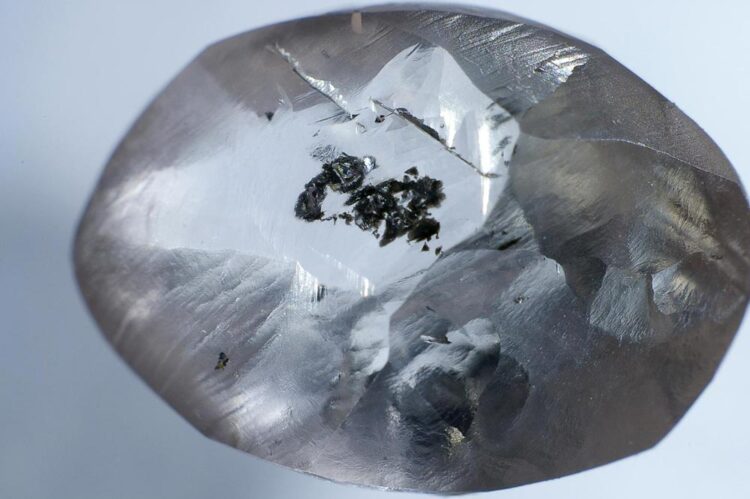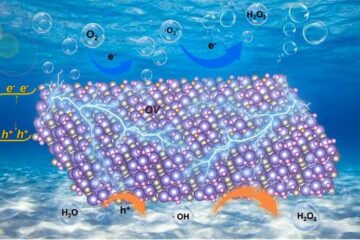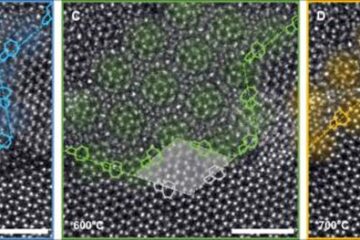Uncovering new understanding of Earth’s carbon cycle

Diamonds from Kankan, Guinea, analyzed in this study The imperfections inside the diamond are small inclusions of a mineral called ferropericlase, which is from the lower mantle.
Credit: Anetta Banas
UAlberta PhD student authors paper shedding new light on Earth’s deepest mechanisms using information from diamonds.
A new study led by a University of Alberta PhD student–and published in Nature–is examining the Earth’s carbon cycle in new depth, using diamonds as breadcrumbs of insight into some of Earth’s deepest geologic mechanisms.
“Geologists have recently come to the realization that some of the largest, most valuable diamonds are from the deepest portions of our planet,” said Margo Regier, PhD student in the Department of Earth and Atmospheric Sciences under the supervision of Graham Pearson and Thomas Stachel. “While we are not yet certain why diamonds can grow to larger sizes at these depths, we propose a model where these ‘superdeep’ diamonds crystallize from carbon-rich magmas, which may be critical for them to grow to their large sizes.”
Beyond their beauty and industrial applications, diamonds provide unique windows into the deep Earth, allowing scientists to examine the transport of carbon through the mantle.
“The vast majority of Earth’s carbon is actually stored in its silicate mantle, not in the atmosphere,” Regier explained. “If we are to fully understand Earth’s whole carbon cycle then we need to understand this vast reservoir of carbon deep underground.”
The study revealed that the carbon-rich oceanic crust that sinks into the deep mantle releases most of its carbon before it gets to the deepest portion of the mantle. This means that most carbon is recycled back to the surface and only small amounts of carbon will be stored in the deep mantle–with significant implications for how scientists understand the Earth’s carbon cycle. The mechanism is important to understand for a number of reasons, as Regier explained.
“The movement of carbon between the surface and mantle affects Earth’s climate, the composition of its atmosphere, and the production of magma from volcanoes,” said Regier. “We do not yet understand if this carbon cycle has changed over time, nor do we know how much carbon is stored in the deepest parts of our planet. If we want to understand why our planet has evolved into its habitable state it is today and how the surfaces and atmospheres of other planets may be shaped by their interior processes, we need to better understand these variables.”
###
The study was made possible through a collaboration between researchers at the University of Alberta and the University of Glasgow, including Dr. Jeff Harris, who collected the diamond samples used in the study. Support through federal funding from the Natural Sciences and Engineering Research Council of Canada (NSERC), via the Diamond Exploration and Research Training School at the University of Alberta was also integral in enabling this research.
The paper, “The lithospheric to lower mantle carbon cycle recorded in superdeep diamonds,” was published in Nature (doi: 10.1038/s41586-020-2676-z).
Media Contact
All latest news from the category: Earth Sciences
Earth Sciences (also referred to as Geosciences), which deals with basic issues surrounding our planet, plays a vital role in the area of energy and raw materials supply.
Earth Sciences comprises subjects such as geology, geography, geological informatics, paleontology, mineralogy, petrography, crystallography, geophysics, geodesy, glaciology, cartography, photogrammetry, meteorology and seismology, early-warning systems, earthquake research and polar research.
Newest articles

How 3D printers can give robots a soft touch
Soft skin coverings and touch sensors have emerged as a promising feature for robots that are both safer and more intuitive for human interaction, but they are expensive and difficult…

Oxygen vacancies mediated ultrathin Bi4O5Br2 nanosheets
… as efficient piezocatalyst for synthesis of H2O2 from pure water. As an important chemical raw material, hydrogen peroxide (H2O2) is widely applied in various aspects of industry and life….

Atom-by-atom: Imaging structural transformations in 2D materials
Silicon-based electronics are approaching their physical limitations and new materials are needed to keep up with current technological demands. Two-dimensional (2D) materials have a rich array of properties, including superconductivity…




















